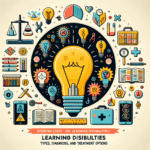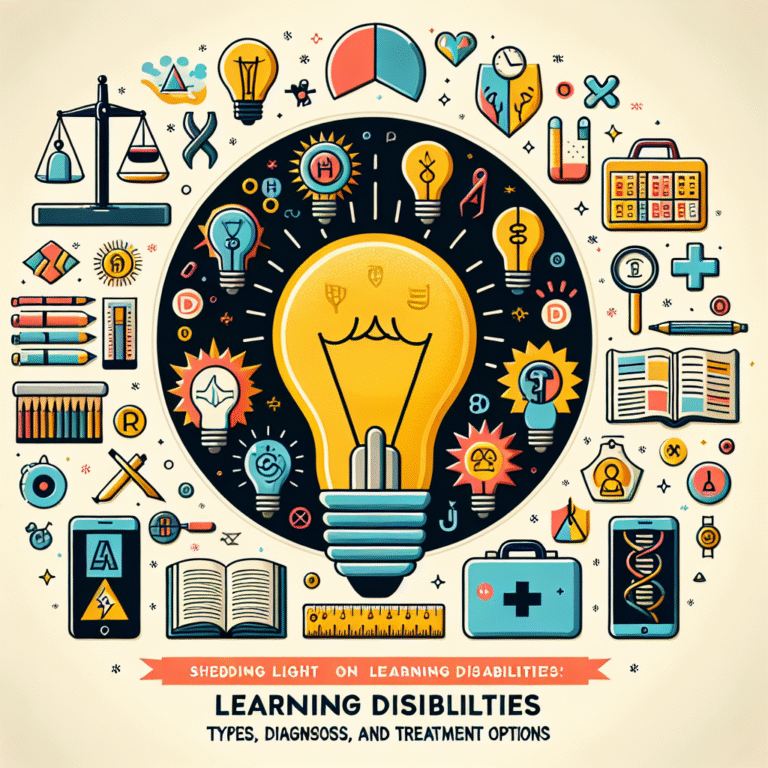
Introduction
In the realm of research, understanding the intricacies of study design is essential for grasping the results produced by any scientific investigation. Whether you’re diving into education, public health, or social science research, you might find yourself at a crossroads between rigorous experimental designs and practical observational studies. This is where quasi-experimental design enters the scene—a powerful methodology that serves as a bridge, allowing researchers to navigate the complexities of real-world scenarios while maintaining scientific rigor.
In this article, Understanding Quasi-Experimental Design: Bridging the Gap Between Experiments and Observational Studies, we will delve deep into what quasi-experimental designs entail, revealing key concepts, practical applications, and illustrative case studies. By the end of this guide, you will not only understand the underlying principles of quasi-experimental design but also appreciate its invaluable role in enhancing the depth and validity of research findings.
Understanding Experimental and Observational Studies
Before we dive into the nuances of quasi-experimental design, it’s crucial to differentiate between experimental and observational studies.
Experimental Studies
Experimental studies are characterized by the manipulation of one or more independent variables to observe the effect on a dependent variable. This method relies heavily on randomization to eliminate biases. The hallmark of an experimental study is the controlled environment, often represented by clinical trials or laboratory settings.
Example:
A medical trial testing a new drug involves random assignment of participants to treatment and control groups, allowing researchers to infer causality with higher confidence.
Observational Studies
In contrast, observational studies observe outcomes without manipulating variables. Researchers collect data from naturally occurring groups, examining relationships and outcomes as they unfold in real-time. While easier to implement, observational studies cannot definitively establish causation due to confounding variables.
Example:
A study examining the relationship between smoking and lung cancer utilizes existing data on smoking habits and cancer prevalence without random assignment.
Bridging the Gap
The gap between these two study designs presents a challenge for researchers. While experimental designs provide clear causal inferences, they often lack ecological validity—the extent to which findings can be generalized to real-world settings. Observational studies offer context and real-world data but fall short on claiming causation. This is where quasi-experimental design serves as an essential tool, effectively bridging the gap.
What is Quasi-Experimental Design?
Quasi-experimental design retains elements of experimental design while lacking full randomization. This method enables researchers to study causal relationships in a more naturalistic setting. By using non-randomized groups or existing data collections, quasi-experimental studies manage to evaluate treatment effects while acknowledging real-world constraints.
Key Features of Quasi-Experimental Design
Intervention: Like experimental designs, quasi-experimental studies involve an intervention or treatment.
Non-Random Assignment: Subjects are not randomly assigned to treatment or control groups. Instead, they may be assigned based on convenience or pre-existing characteristics.
- Comparison Groups: Quasi-experiments often compare groups that are as similar as possible, allowing researchers to estimate the treatment’s impact despite the absence of randomization.
Types of Quasi-Experimental Designs
Non-equivalent Control Group Design
In this design, a treatment group is compared with a control group that is not randomly assigned. Researchers assess both groups before and after the intervention to examine differences.
Interrupted Time Series Design
Researchers gather data at multiple time points before and after a treatment intervention to observe trends and changes specific to the treatment.
Regression Discontinuity Design
This method involves assigning groups based on a cutoff score on a pre-treatment measure, allowing for rigorous estimation of treatment effects at the treatment threshold.
Practical Applications of Quasi-Experimental Design
Education: Enhancing Learning Outcomes
One of the most prevalent applications of quasi-experimental design can be found in the field of education. For instance, a school district may want to evaluate the impact of a new teaching method on students’ performance.
Case Study: New Teaching Method in Elementary Schools
In this quasi-experimental study, two groups of fourth graders—one using the new teaching method while the other continues with traditional pedagogy—are compared. By assessing standardized test scores before and after the intervention, researchers can make informed inferences about the method’s effectiveness.
Analysis: Despite both groups not being randomly assigned, this design helps identify trends in academic improvement and can be insightful for future educational practices.
Public Health: Evaluating Community Programs
Public health initiatives often utilize quasi-experimental designs to measure the effects of community programs on health outcomes.
Case Study: Smoking Cessation Program
A quasi-experimental study evaluates a smoking cessation program by comparing smoking rates in communities that adopt the program with those that do not over the same period. Researchers gather data from local health departments to measure smoking prevalence and cessation rates.
Analysis: By using existing community data before and after the intervention, researchers can understand the program’s impact even in the absence of random assignment.
Social Science: Informing Policy Decisions
Quasi-experimental designs in social science often focus on evaluating policy interventions and their effects on population behaviors.
Case Study: Minimum Wage Legislation
A study exploring the impact of a minimum wage increase in one state compared to neighboring states without such legislation illustrates this application. By examining wage changes, employment rates, and economic indicators over time, researchers assess the broader implications of the legislation.
Analysis: Although the states were not randomly selected, this comparative approach offers insights into economic policy’s real-world effects and may inform future legislative decisions.
Advantages and Limitations of Quasi-Experimental Design
Advantages
Feasibility: Quasi-experimental designs are often easier to implement in real-world settings, especially when random assignment to groups is not ethical or practical.
Generalizability: These designs provide valuable data that can be generalized to larger populations, as they reflect real-world conditions.
- Ethical Considerations: Quasi-experimental designs allow researchers to study interventions that might be unethical to assign randomly.
Limitations
Lack of Randomization: The absence of random assignment increases the risk of bias, making it harder to establish causation definitively.
Confounding Variables: Quasi-experimental studies are susceptible to confounding variables that may skew results, influencing group differences beyond the intervention.
- Internal Validity Concerns: Since groups may differ in significant ways aside from the treatment, internal validity may be compromised.
Analyzing Data in Quasi-Experimental Studies
The analytical framework for quasi-experimental studies often utilizes a range of statistical methods to account for potential biases and confounding factors.
Regression Analysis
Regression models can be employed to control for variables that might affect the outcome, adjusting for differences between groups. This approach allows researchers to isolate the effect of the intervention more effectively.
Propensity Score Matching
This technique involves matching participants based on a set of observed characteristics to reduce selection bias. By creating comparable groups, researchers can draw more accurate conclusions about the impact of the intervention.
Interrupted Time Series Analysis
For studies employing an interrupted time series design, statistical methods are used to measure trends before and after the intervention, providing insights into the treatment’s effectiveness over time.
Conclusion
In conclusion, understanding quasi-experimental design: bridging the gap between experiments and observational studies is critical for researchers looking to enhance the quality and applicability of their findings. This methodology balances rigorous inquiry with the complexities of real-world conditions, making it an invaluable tool across various fields.
Whether in education, public health, or social policy, quasi-experimental designs provide the flexibility to conduct meaningful research while yielding insights that can inform effective practices and policies.
As you navigate your research endeavors, consider incorporating quasi-experimental designs to strengthen your findings and provide depth to your analyses. The power of this methodology lies in its adaptability, allowing you to embrace the nuances of human behavior and societal dynamics.
FAQs
1. What is the primary difference between experimental and quasi-experimental designs?
Experimental designs involve random assignment to treatment and control groups, allowing for clear causal inferences. Quasi-experimental designs do not utilize random assignment, often comparing naturally occurring groups, which can limit causal claims but still provide valuable insights.
2. Can quasi-experimental designs be used to infer causation?
While quasi-experimental designs can suggest causal relationships, they are more limited than true experimental designs due to potential biases and confounding variables. The findings should be interpreted with caution.
3. What are some common statistical methods used in quasi-experimental studies?
Common statistical methods include regression analysis, propensity score matching, and interrupted time series analysis. These techniques help control for biases and increase the reliability of findings.
4. In what fields are quasi-experimental designs most commonly applied?
Quasi-experimental designs are widely applied in fields such as education, public health, economics, and social sciences, where randomization may not be ethical or feasible.
5. How do researchers minimize bias in quasi-experimental studies?
Researchers can minimize bias by carefully selecting comparison groups, utilizing statistical controls, and applying techniques such as propensity score matching to create more equitable comparisons between treatment and control groups.
With the knowledge gained from this comprehensive exploration, you are now equipped to understand and leverage quasi-experimental design effectively in your research pursuits. By applying this methodology, you can bridge the gap between experimental rigor and real-world relevance, contributing to a more nuanced understanding of complex social phenomena.

















